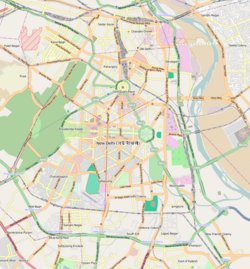| Fatehpuri Mosque | |
|---|---|
 The mosque façade and entrance, in 2018 | |
| Religion | |
| Affiliation | Sunni Islam |
| Ecclesiastical or organizational status |
|
| Leadership | Mukarram Ahmad (imam) |
| Status | Active |
| Location | |
| Location | Chandni Chowk, Old Delhi, Central Delhi |
| Country | India |
Location of the mosque in Central Delhi | |
| Geographic coordinates | 28°39′24″N77°13′21″E / 28.65667°N 77.22250°E |
| Architecture | |
| Type | Mosque architecture |
| Style | Mughal |
| Founder | Fatehpuri Begum (wife of Shahjahan) |
| Completed | 1650 |
| Specifications | |
| Dome(s) | One (maybe more) |
| Minaret(s) | Two |
| Spire(s) | Two (maybe more) |
| Materials | Red sandstone |
The Fatehpuri Mosque, also Fatehpuri Masjid, is a 17th-century Sunni mosque, located at the western end of the oldest street of Chandni Chowk, in the Old Delhi neighbourhood of Delhi, India. The mosque is opposite the Red Fort and, after Jama Masjid, is the second largest mosque in Delhi. [1]




